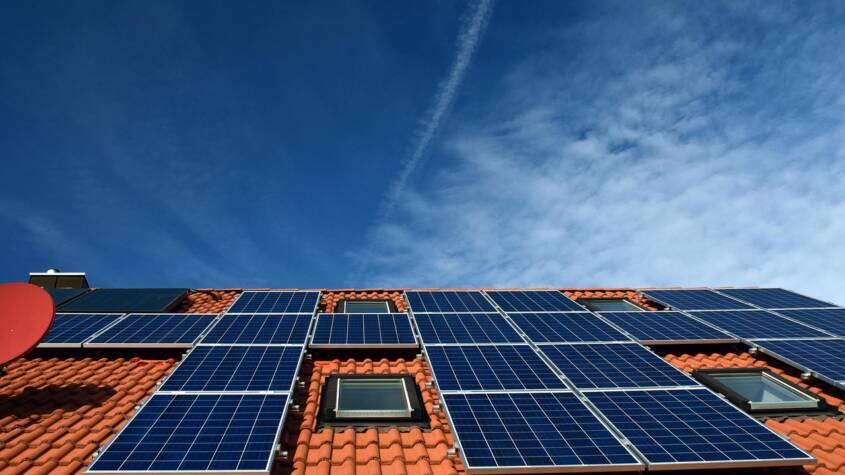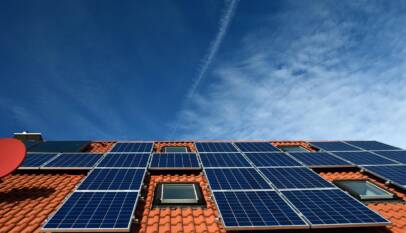
Building integrated solar (BIPV) refers to solar power systems that are seamlessly incorporated into a building’s structure, such as roofs, facades, or windows. This approach allows buildings to generate clean energy without the need for separate solar panels, blending functionality with design.
BIPV systems can reduce energy costs while maintaining the aesthetic and structural integrity of a building. They represent a practical solution for urban environments where space is limited but energy demand remains high.
By incorporating solar technology directly into the building’s envelope, it offers a dual purpose—providing both energy generation and protection. This integration can contribute significantly to sustainable building practices.
Fundamentals of Building Integrated Solar
Building integrated solar combines photovoltaic technology directly with building elements. It transforms surfaces like roofs and facades into energy generators without altering the structure’s aesthetics or function.
Core Principles
Building integrated solar relies on integrating photovoltaic cells into building materials to convert sunlight into electricity. These solar elements replace traditional construction materials while maintaining structural integrity. Efficiency depends on orientation, shading, and the quality of photovoltaic technology.
Key factors include durability, weather resistance, and energy yield. The design aims for energy self-sufficiency and aesthetic coherence. Integration reduces wiring complexity and installation costs compared to add-on solar panels.
Types of Building Integrated Photovoltaics (BIPV)
BIPV comes in several forms, mainly:
- Solar Roof Tiles: Replace conventional roofing with solar-embedded tiles.
- Facade Panels: Vertical surfaces covered with solar modules.
- Glazing Systems: Transparent or semi-transparent photovoltaic glass used in windows or skylights.
Each type suits different architectural needs and climate conditions. The choice depends on surface availability, budget, and desired visual impact. Modules vary in efficiency, color, and transparency.
Integration Methods in Architectural Design
Integration can be structural, where solar components become load-bearing parts, or non-structural, serving as cladding or shading. The method chosen affects installation complexity and maintenance.
Architects coordinate photovoltaic placement with sunlight patterns to optimize output. Electrical connections are hidden within building cavities to maintain aesthetics. Collaboration between engineers and designers is essential to ensure compliance with building codes and functional requirements.
Benefits, Applications, and Future Developments
Building integrated solar systems offer energy generation directly within a building’s structure. Their design merges power production with architectural elements, providing multiple advantages and diverse practical uses. Innovations continue to push performance and market growth.
Energy Efficiency and Sustainability
Building integrated solar panels reduce energy losses by generating power on-site, lowering transmission and distribution inefficiencies common in traditional solar farms. By embedding solar cells into roofs, facades, or windows, they capture sunlight where it is most accessible.
These systems help buildings meet green certification standards such as LEED or BREEAM due to reduced carbon footprints and enhanced energy self-sufficiency. They also decrease reliance on fossil fuels, contributing to sustainability goals and climate targets.
Maintenance requirements are generally low, and energy produced supports peak usage times, improving overall system efficiency. Their seamless integration prevents additional land use, important for urban environments.
Common Use Cases in Residential and Commercial Buildings
In residential settings, building integrated solar often replaces conventional roofing materials—such as solar shingles or tiles—offering an aesthetic upgrade without sacrificing energy generation. They fit well into home designs seeking clean energy solutions without bulky panels.
Commercial applications include solar glass for facades, awnings, and skylights, turning otherwise unused surfaces into power sources. Large office buildings and retail centers use these to offset electricity consumption cost-effectively.
Industrial warehouses and schools adopt integrated photovoltaics to reduce energy expenses while enhancing building appearance. Municipal buildings may use transparent solar windows to combine daylighting with power production.
Design Innovations and Material Advances
Recent progress focuses on improving photovoltaic material efficiency without compromising transparency or durability. Perovskite solar cells, combined with silicon, increase conversion rates while maintaining lightweight flexibility.
Developments in thin-film technology allow integration into curved surfaces and irregular architectural elements. These materials resist weathering and adapt to different climates, expanding usability.
Electrochromic solar windows enable dynamic tinting, controlling light and heat flow while generating power. Smart building systems now incorporate these advances for energy optimization and occupant comfort.
Market Trends and Growth Outlook
The integrated solar market is growing driven by policy incentives, increased environmental awareness, and falling material costs. Asia-Pacific and Europe lead adoption, influenced by stringent energy codes and urban density challenges.
Manufacturers focus on scalability and customization, enabling mass production with tailored solutions for various building types. Investment in R&D targets lifespan extension and recyclability.
Projected growth rates exceed traditional rooftop photovoltaics, fueled by regulations requiring renewable energy integration in new constructions. Partnerships between architects, builders, and tech developers optimize deployment.
Kids Swimming Lessons Essential Tips for Safety and Skill Development
Kids swimming lessons teach essential water safety skills and build confidence in the wate…








